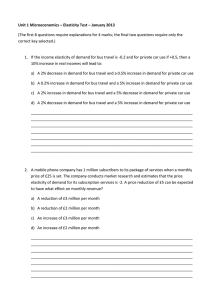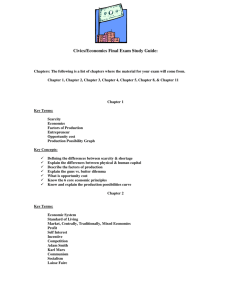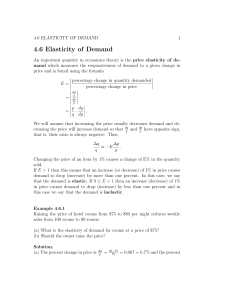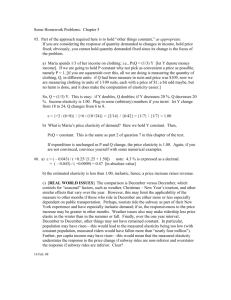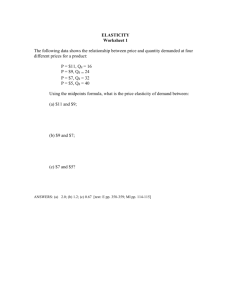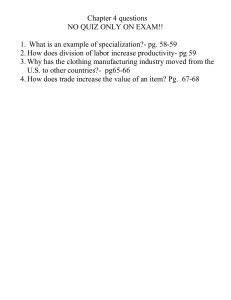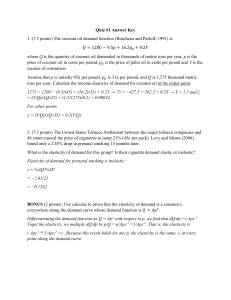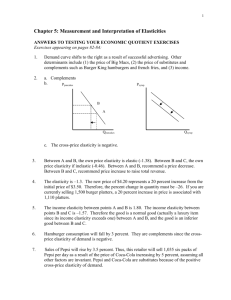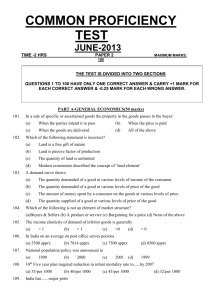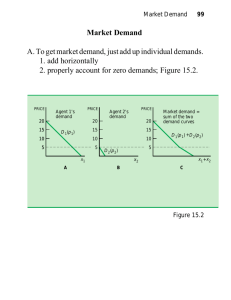The Interdependence of Markets
advertisement
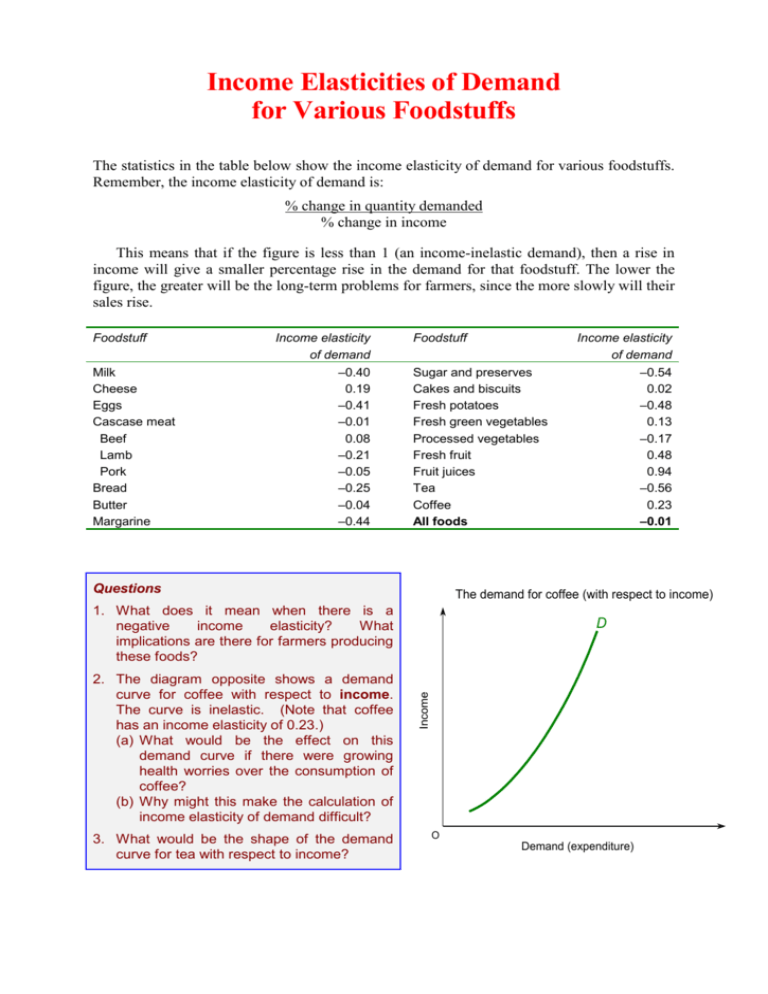
Income Elasticities of Demand for Various Foodstuffs The statistics in the table below show the income elasticity of demand for various foodstuffs. Remember, the income elasticity of demand is: % change in quantity demanded % change in income This means that if the figure is less than 1 (an income-inelastic demand), then a rise in income will give a smaller percentage rise in the demand for that foodstuff. The lower the figure, the greater will be the long-term problems for farmers, since the more slowly will their sales rise. Foodstuff Milk Cheese Eggs Cascase meat Beef Lamb Pork Bread Butter Margarine Income elasticity of demand –0.40 0.19 –0.41 –0.01 0.08 –0.21 –0.05 –0.25 –0.04 –0.44 Foodstuff Sugar and preserves Cakes and biscuits Fresh potatoes Fresh green vegetables Processed vegetables Fresh fruit Fruit juices Tea Coffee All foods Questions The demand for coffee (with respect to income) 1. What does it mean when there is a negative income elasticity? What implications are there for farmers producing these foods? 3. What would be the shape of the demand curve for tea with respect to income? D Income 2. The diagram opposite shows a demand curve for coffee with respect to income. The curve is inelastic. (Note that coffee has an income elasticity of 0.23.) (a) What would be the effect on this demand curve if there were growing health worries over the consumption of coffee? (b) Why might this make the calculation of income elasticity of demand difficult? Income elasticity of demand –0.54 0.02 –0.48 0.13 –0.17 0.48 0.94 –0.56 0.23 –0.01 O Demand (expenditure)
